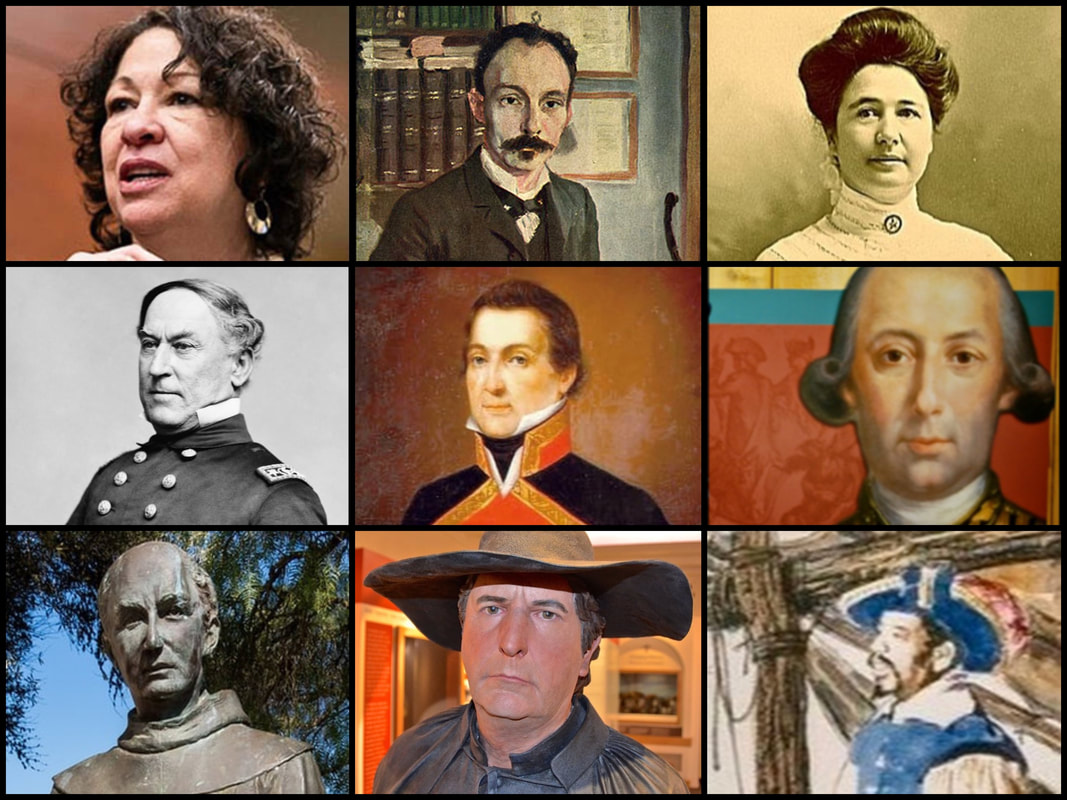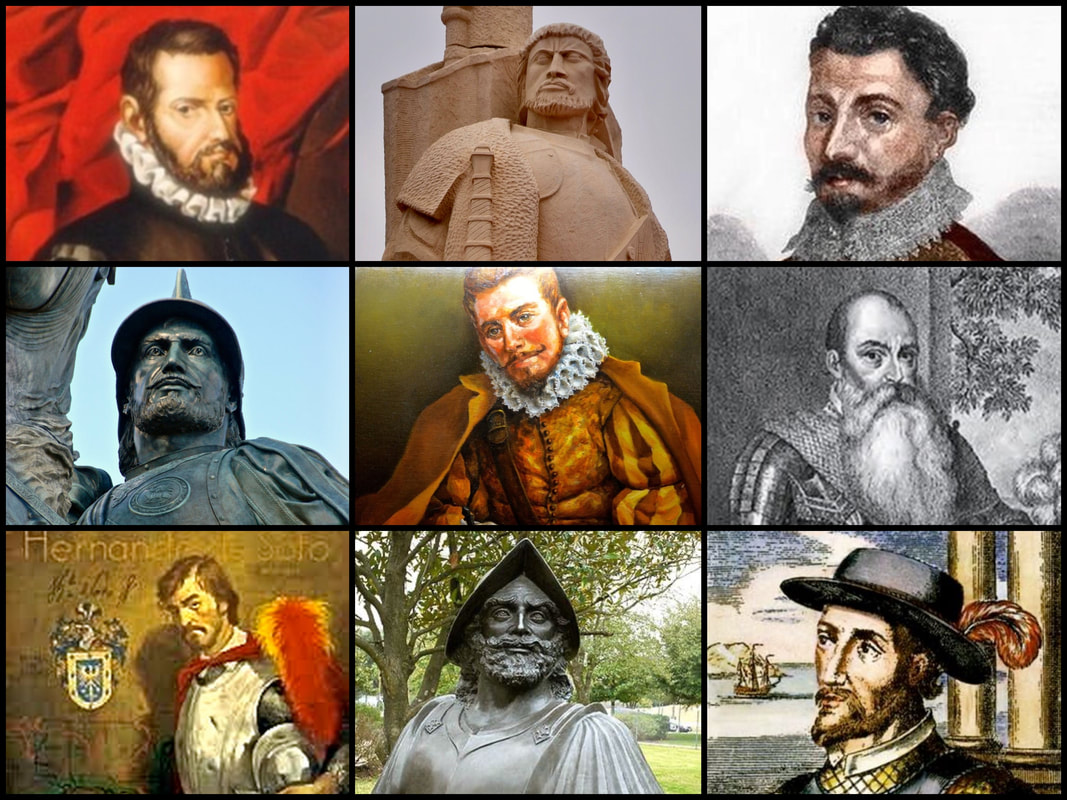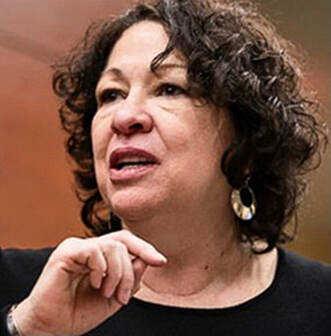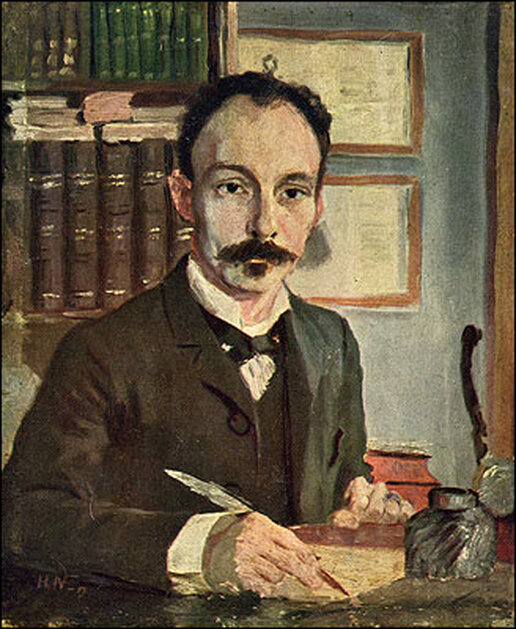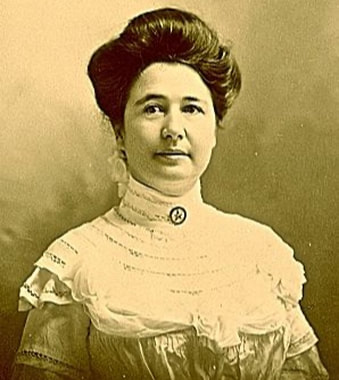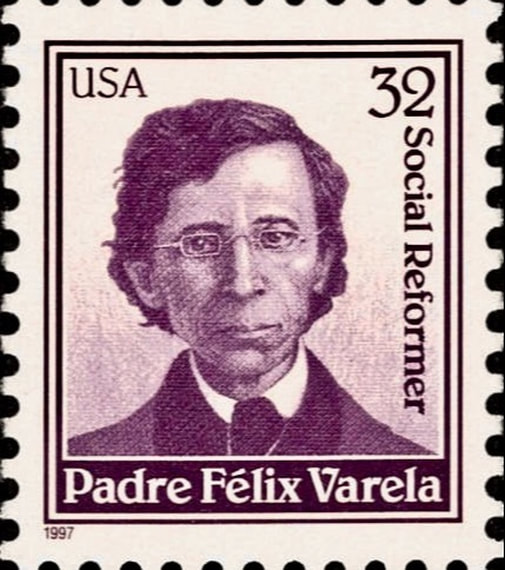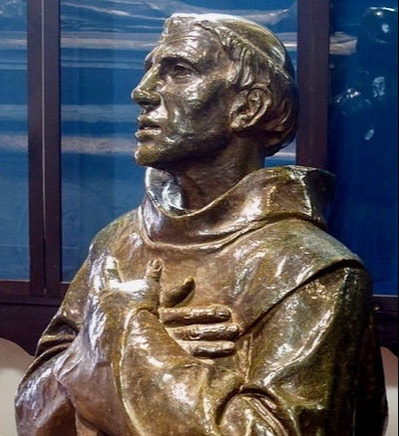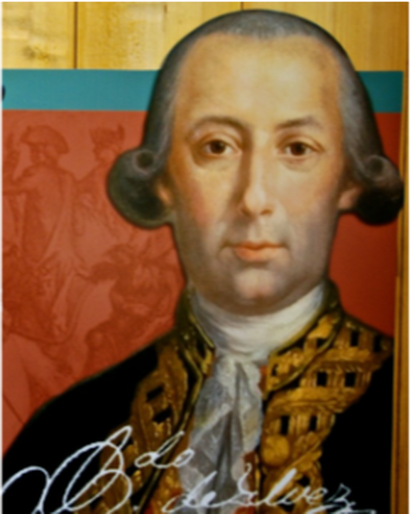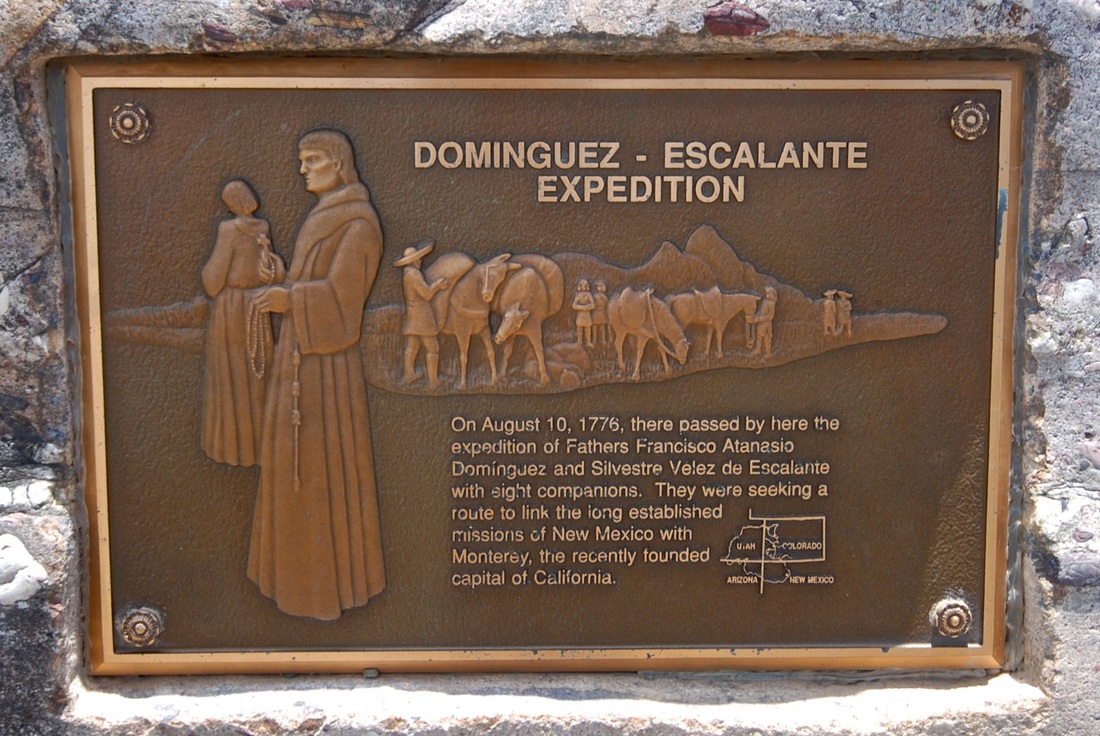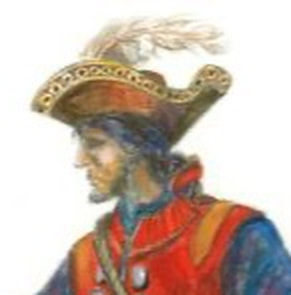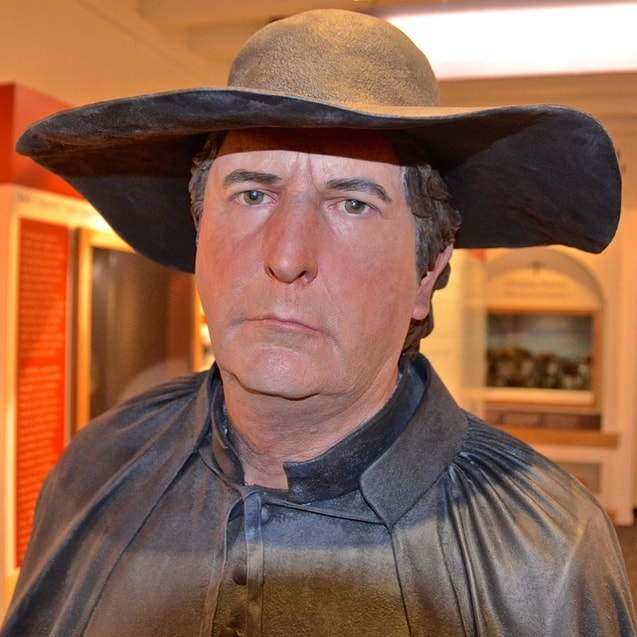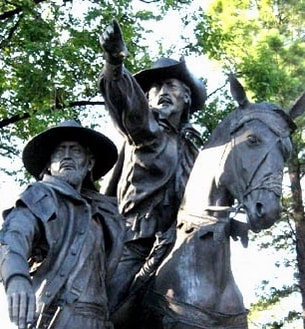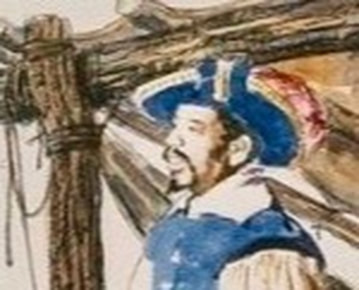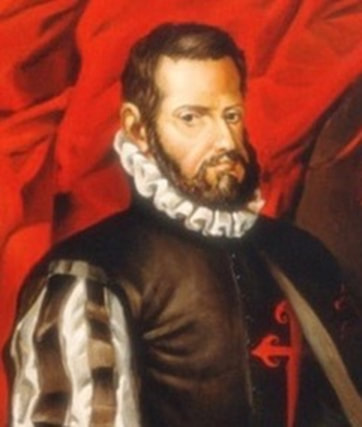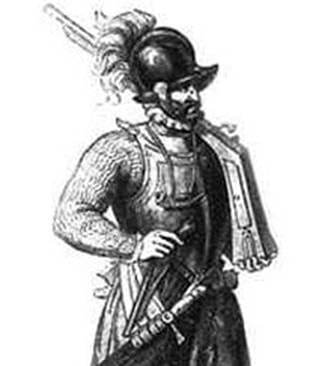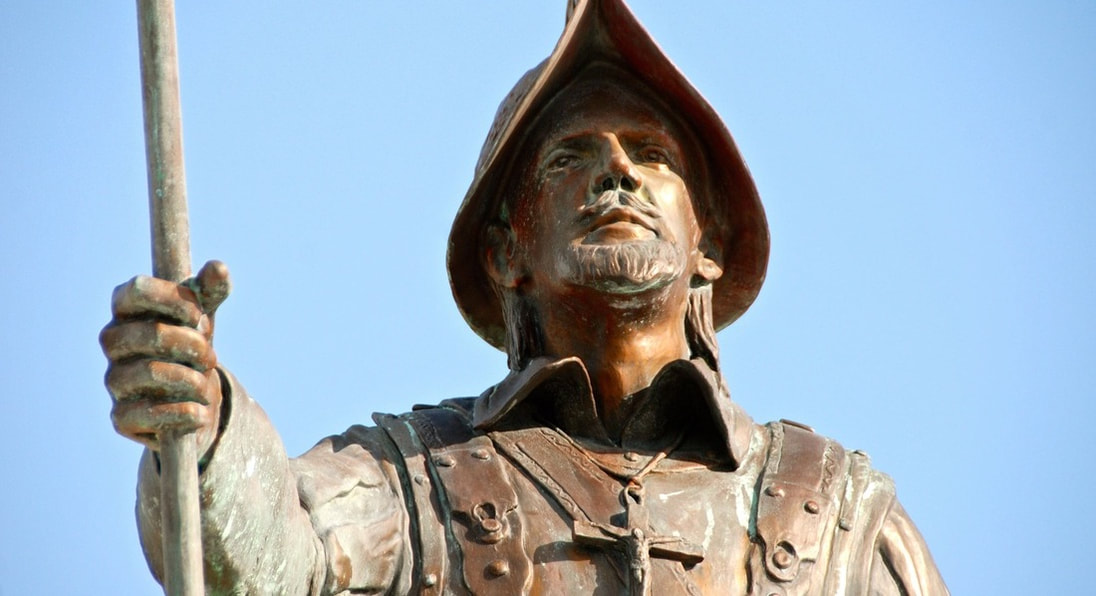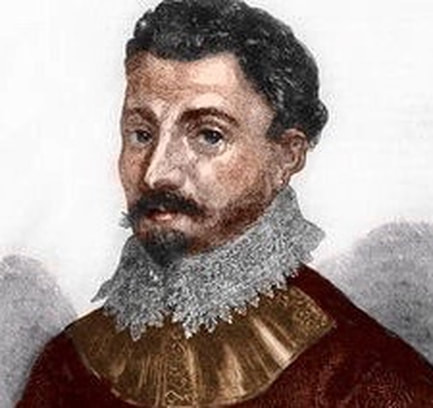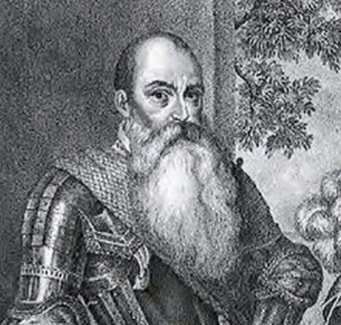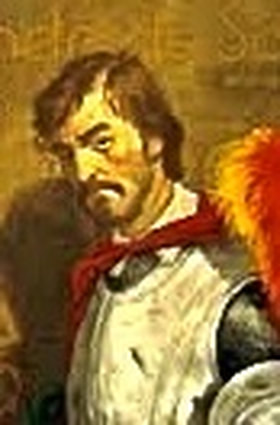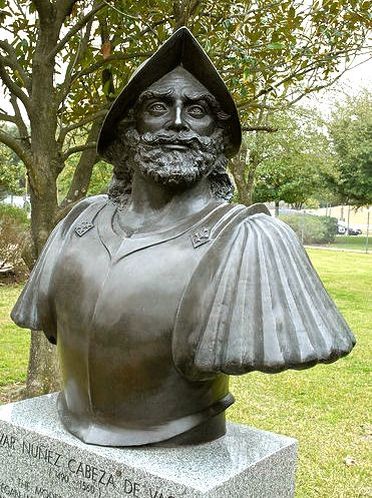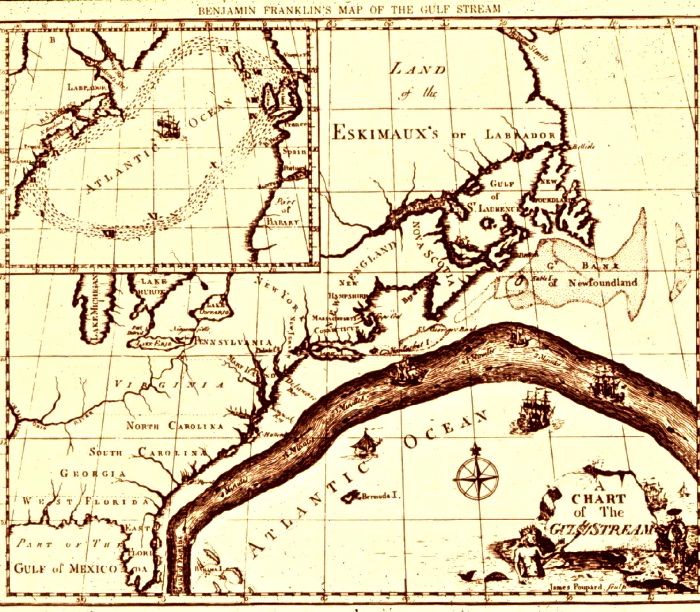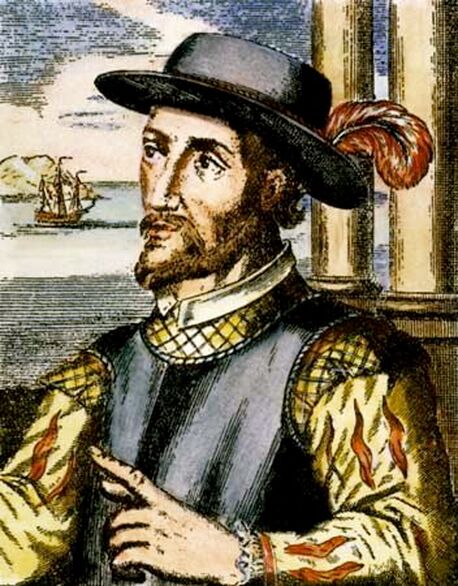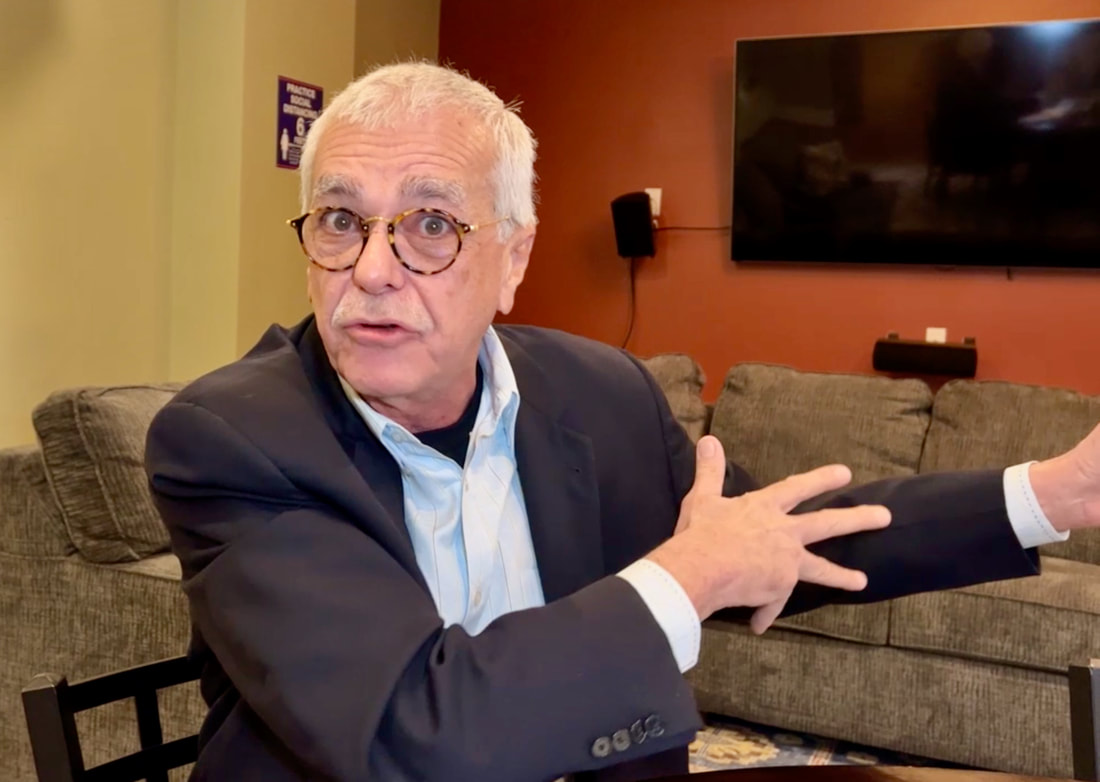Hispanics In American History
|
While some of these articles may not be exclusively about a person, there is a huge person behind all of them!
|
While most of these articles were written by me and my students, and all reside in this website, we welcome suggestions, preferably links, to other profile/articles that can be added to this page. If you can think of another Hispanic figure who deserves to be on this page (and we know there are many), and if you can find a good online article about that person, send us name and a link. We will add those links to this page. To give us your input, there is a blog at the bottom of this page! What do you think?
The Meaning of 'Sotomayor'August 11, 2009 - The feeling is hard to explain. Ethnic pride is like intense love -- something you just can't put into words. You have to feel it to understand it. This is why, in the U.S. Hispanic community -- in ways that are incomprehensible to many non-Latino Americans -- Justice Sonia Sotomayor's rise to the U.S. Supreme Court is not seen as just one woman's achievement.
It is the triumph of an entire community. Instead of "she did it," all over the country, most of the nation's 45 million Latinos are telling themselves, "We did it!" To us, the first Hispanic on the Supreme Court is the culmination of a long-fought struggle for community empowerment. It is due recognition that Latinos have a lot to contribute to this great nation -- as we have for centuries, since before we were even a nation. Read more . . . |
Jose Marti: His Legacy Lives HereJanuary 26, 2010 - You may have listened to his verses in the old Cuban song "Guantanamera." You may have seen his impressive statue in New York's Central Park. You may have heard him mentioned when Cuban-Americans and Washington politicians have discussed the U.S. government radio and TV stations that bear his name or when people have been talking about streets, parks, schools or theaters that were named after him — in Cuba, the United States and throughout the Americas.
His name was Jose Marti. You may know him as the still-revered poet, journalist and revolutionary leader of the Cuban struggle for independence from Spain in the late 19th century or as the remarkable writer and stirring speaker who fostered the ideals of freedom and democracy in Spanish America. This week, you even could be attending a civic or cultural event to commemorate the 157th anniversary of his birth, which was in Havana on Jan. 28, 1853. All over this country and this hemisphere, there will be a multitude of banquets, lectures, recitals, writings and exhibits devoted to promoting Marti's teachings. And yet you may not realize that Marti's most important work — his legacy — was made while he lived in New York City during the last 15 years of his life. Read more . . . |
Adina De Zavala: Hidden Latina Role ModelSeptember 2, 2014 - Long after "Remember the Alamo" no longer needed to be used as a battle cry against Mexico, it was used once again by a Latina who fought to preserve that former Spanish mission as a shrine to the heroes of the Texas revolution.
Her name was Adina De Zavala, born in 1861, the granddaughter of Lorenzo de Zavala (1789-1836), the first vice president of the Republic of Texas. I must admit that although I knew about her Hispanic grandfather, I didn't know about her until I got to Texas. But once I knew of her, I began to admire her tenacity in defense of her Hispanic heritage. I wish I had lived in her time so I could have met her. I suspect that the rest of the country doesn't know her, either. But in San Antonio, Adina De Zavala is a huge historical figure — as she should be. Read more . . . |
Father Félix Varela: Saluting an ExileWednesday, August 20, 1997 - He was one of those unsung heroes who -- perhaps because he was Hispanic -- went through life without ever getting much recognition for his contributions to American society.
Most American history books don't mention his name. Yet Father Félix Varela was a Catholic priest, philosopher, teacher, writer, legislator, newspaperman, social reformer, and patriot whose political ideals, innovative teaching methods, and humanitarian works in New York City -- some 165 years ago -- still have an impact on society. He was a Cuban exile who went on to become vicar general of the New York Diocese. For many of today's Cuban exiles in the New York metropolitan area, Varela has always been a beacon of inspiration. But unfortunately, many young Cubans and other Latinos don't even know they have such great role models. American historians have denied them the Félix Varelas to be proud of. Read more . . . |
David G. Farragut: A Hidden Hispanic Role ModelJuly 8 2014 -- When you stand next to those huge cannons pointing into Mobile Bay, as I did when I recently visited Fort Gaines and Fort Morgan in Alabama, somehow they don't look as menacing as when you see them from the water, as I did when I took the ferry that crosses the mouth of that huge bay.
In my quest to rediscover America's hidden Hispanic heritage, I sought the perspective of the Union Navy and the Hispanic commander who led them to victory in the Battle of Mobile Bay 150 years ago during the Civil War. I wanted to stand aboard a ship and witness the gauntlet created by those two forts when they were controlled by Confederate forces and to appreciate the courage of the Union commander who cried out, "Damn the torpedoes; full speed ahead!" Although that might be a paraphrased version of what he actually said, more people know that battle cry than they actually know the man who said it. Admiral David G. Farragut is no longer a household name, but he was one of the greatest war heroes in American history. After the Civil War, his image was used in Navy recruitment posters and U.S. postage stamps. Read more . . . |
Alessandro Malaspina Reaches AlaskaAlessandro Malaspina an Italian-born Spanish naval officer leads a two-ship scientific expedition from Cadiz, Spain across the Atlantic Ocean, around Cape Horn and all the way up the West coast of the Americas to the Gulf of Alaska.
Although he expects to sail from Mexico across the Pacific Ocean, by the time he gets to Mexico, Malaspina receives orders from the King of Spain to continue northward along the Pacific Coast of North America in search of the Northwest Passage, that long-sought waterway that would connect the Atlantic and Pacific Oceans. Sharing command of the voyage with another Spanish naval officer, José de Bustamante y Guerra, the Malaspina expedition sails from Acapulco, Mexico directly to Yakutat Bay, Alaska. Although they supposedly share "dual command," even Bustamante acknowledges that Malaspina is the chief the expedition. They never find the illusive Northwest Passage, but the expedition and its Spanish scientists spend a month studying the lifestyle of the Tinglit, the indigenous people of the Pacific Northwest Coast of North America. Read more . . . |
Fermín Francisco de Lasuén
|
Bernardo de Galvez:
|
Captain Fernando de Leyba:
|
Dominguez and Escalante:
|
Father Serra opens San Diego de Alcalá, California's first Spanish mission1769 -- Father Junipero Serra, a Franciscan priest, arrives in California, from Baja California, as part of the Gaspar de Portolá overland expedition and establishes the San Diego De Alcalá Mission, the first of 21 Spanish missions built along the coast of California to convert the natives to Christianity -- and the foundation for today's City of San Diego.
Known as the "Mother of all missions," San Diego De Alcalá marks the beginning of Catholicism in this region, and the gateway that opened California to Spanish and Mexican settlement. Juan Rodriguez Cabrillo had claimed California for the Spanish empire in 1542, but they did not settle in the area until Father Serra leads a groups of Franciscan priests who establish the first nine of California's 21 missions. Read more . . . |
Juan Antonio Maria de Rivera
|
Father Eusebio Francisco Kino:
|
Pedro de Peralta Establishes Santa FeSpanish Army officer Don Pedro de Peralta, appointed second governor of New Mexico, arrives at its capital, La Villa de San Gabriel, and decides to move the capital to a new town. He establishes and names Santa Fe, New Mexico.
Replacing Governor Juan de Oñate, who had made many enemies among the natives, Peralta travels to New Mexico with only 12 soldiers and eight Franciscan priests, who are determined to convert the natives to Catholicism. While the missionaries promise the natives that baptism would protect them from deceases, Peralta convinces some 200 San Gabriel settlers that the capital is erroneously located in an area that suffers drought, lacks fertile land, and is also too far from the Pueblo Indian population centers. Peralta selects an alternative site, with better land and a water good supply, and a surveyor designs the new settlement, which is separated by districts, home and garden plots, and including a downtown area, Santa Fe Plaza, for commerce and government buildings. Read more . . . |
Juan Rodriguez becomes
|
Pedro Menendez de Avilés establishes 'San Agustin'1565 -- Spanish conquistador Pedro Menendez de Avilés establishes St. Augustine, the first successful settlement in Spanish Florida, and the city that is to become the oldest continuously inhabited European settlement in the continental United States.
He names the settlement "San Agustin" because 11 days earlier, on August 28, the feast of San Agustin, his fleet sighted the coast of Florida. To commemorate the town's foundation, on Sept. 28, they celebrate a Catholic Mass with the Timacua natives of the area. That ceremony is to be regarded as America's first Thanksgiving. Leading a fleet of several ships with some 1,000 sailors, soldiers and settlers, his mission is to survey the North American east coast, seek a suitable site to establish a permanent colony and drive away European intruders who could be encroaching on territory claimed by Spain. Yet shortly after sighting Florida, before exploring the coastline or seeking a settlement site, they find precisely what they had feared: French settlers secretly establishing a colony. It's part of France's effort to move into Spanish territory and contest Spain's claim of Florida. Read more . . . |
Captain Juan Pardo builds first European settlements in the interior of North America1566-68 -- From Santa Elena, Pedro Menendez de Avilés orders inland expeditions -- led by Captain Juan Pardo -- to the interior of what is now South Carolina, North Carolina and Tennessee. Pardo's mission is to pacify and convert the natives to Catholicism, and to discourage the creation of French colonies in this area.
Pardo's first expedition reaches Joara, the great Native American regional center of Mississippian culture near present-day Morganton, N.C. From 1566 to 1568, Pardo buids six forts in what is now South Carolina, North Carolina and Tennessee and leaves a small contingent of Spanish soldiers, and Jesuit missionaries, at each one. These are considered the first European settlements in the interior of North America. But the natives resist Spanish settlements. They attack and burn the forts, and within 18 months, kill all but one of the 120 soldiers and missionaries Pardo had left behind. This is the last time the Spanish try to imposed their colonial claim in the interior. Read more . . . |
Tristan De Luna Builds Santa Maria de Ochuse1559 -- Spanish conquistador Tristan de Luna leads an 11-ship, 1,500-person expedition starting from Veracruz, Mexico, to settle Santa Maria de Ochuse in present-day Pensacola, Fl. Although the settlement was wiped out by a fierce hurricane shortly after it was established, Pensacola still calls itself "America's First Settlement." Read more . . .
|
Juan Rodriguez Cabrillo: First European
|
Sebastian Vizcaino explores the West Coast1602 -- Spanish explorer Sebastian Vizcaino sails north along the Pacific Coast from Acapulco to San Miguel, which he renames San Diego de Alcala -- now the city of San Diego, California.
In search for new trade routes that would improve the economy of New Spain (Mexico), Vizcaino takes three ships -- The San Diego, The Santa Tomas, and The Tres Reyes -- with 200 soldiers and sailors, three Catholic friars and his 13-year-old son Juan. On his mission to expand Spain's northwestern trading frontier, he follows the shoreline first explored by Juan Rodriguez Cabrillo 60 years earlier. But Vizcaino visits and names many California landmarks, including Monterey Bay, Santa Catalina Island, San Pedro, Santa Barbara, Point Conception, the Santa Lucia Mountains, Carmel Bay and the Carmel River. Read more . . . |
Juan de Oñate explores New MexicoJuan de Oñate, a Spanish conquistador born in New Spain (present-day Mexico), leads a caravan of 129 soldiers, 10 Franciscan friars, some 300 settlers, 83 wagons and about 7,000 head of cattle, crosses the Rio Grande and claims New Mexico for the Spanish crown.
To celebrate the settlement of New Mexico, he hosts a mass and invites the natives to join him and his troops in a thanksgiving meal. Today New Mexico considers this to be the first American Thanksgiving. The expedition settles at the juncture of the Rio Grande and the Chama River and establishes “San Juan de los Caballeros” as the first capital of New Mexico. A year later, Oñate moves the capital to the west bank of Rio Grande and establishes "San Gabriel" (both are part of the present-day Ohkay Owingeh). Later, as the colonial governor of Santa Fe de Nuevo Mexico, a province in the Viceroyalty of New Spain, he leads early Spanish expeditions to the Great Plains and the lower Colorado River Valley, encountering Native American pueblos, establishing Spanish administered settlements, and making enemies among the natives. Read more . . . |
Coronado Explores the Southwest,
|
Hernando de Alarcon Reaches CaliforniaSpanish explorer Hernando de Alarcon sails northward from Acapulco, along New Spain's Pacific coast, through the Gulf of California, enters the Colorado River, and becomes one of the first Europeans to reach what it is now California. He also confirms that California is not an island.
After sailing with three ships and for three months, avoiding sandbars that slowed the journey, de Alarcon finds the mouth of the Colorado. He selects about 20 experience seamen, takes two boats, and spends 12 days leading the first Europeans to ascend the river for a considerable distance. Their mission is to meet and resupply the simultaneous overland expedition into North America led by Francisco Vasquéz de Coronado. Although the meeting is not realized, de Alarcon's expedition finally discards a fictional legend. Read more . . . |
Hernando de Soto:
|
Cabeza de Vaca treks across North America,
|
Estevan Gomez Explores the East Coast1524-1525 - Spanish ship captain Estevan Gomez explores the east coast of North America – from Nova Scotia to Florida – leading a 29-men, single-ship expedition in search for a northwest passage to the Spice Islands, and ends up as the namesake northeast America.
Gomez (or Estêvão Gomes) is a Portuguese navigator and cartographer who sails for Spain. While searching for a waterway across North America, he enters every bay and river along the way. And while never finding the long-sought passage, Gomez charts the entire American east coast. Based on his charts, European mapmakers create the most accurate maps of North America (to date) and call the entire Northeast "La Tierra de Estevan Gomez." How many Americans in the Northeast know that they live in "The Land of Estevan Gomez?" When they see the Hudson River, how many New Yorkers know that Gomez first named it "El Rio San Antonio?" Read more . . . |
Alaminos discovers the Gulf StreamApril 22, 1513 - Although Benjamin Franklin named the Gulf Stream and published its first map in 1770, the ocean current that still propels ships back to Europe was discovered by Antón de Alaminos, the pilot for Ponce de Leon, while two of their three ships were anchored off Florida and the third one kept getting pulled by the current. On April 22, 1513, the ship's logbook noted that this stream was "more powerful than the wind." Six years later (1519), he became the first navigator to return to Europe propelled by the Gulf Stream.
|
Ponce de Leon Discovers North America,
|
While most of these articles were written by me and my students, and all reside in this website, we welcome suggestions, preferably links, to other profile/articles that can be added to this page. If you can think of another Hispanic figure who deserves to be on this page (and we know there are many), and if you can find a good online article about that person, send us name and a link. We will add those links to this page. Please give us your input below. What do you think?

